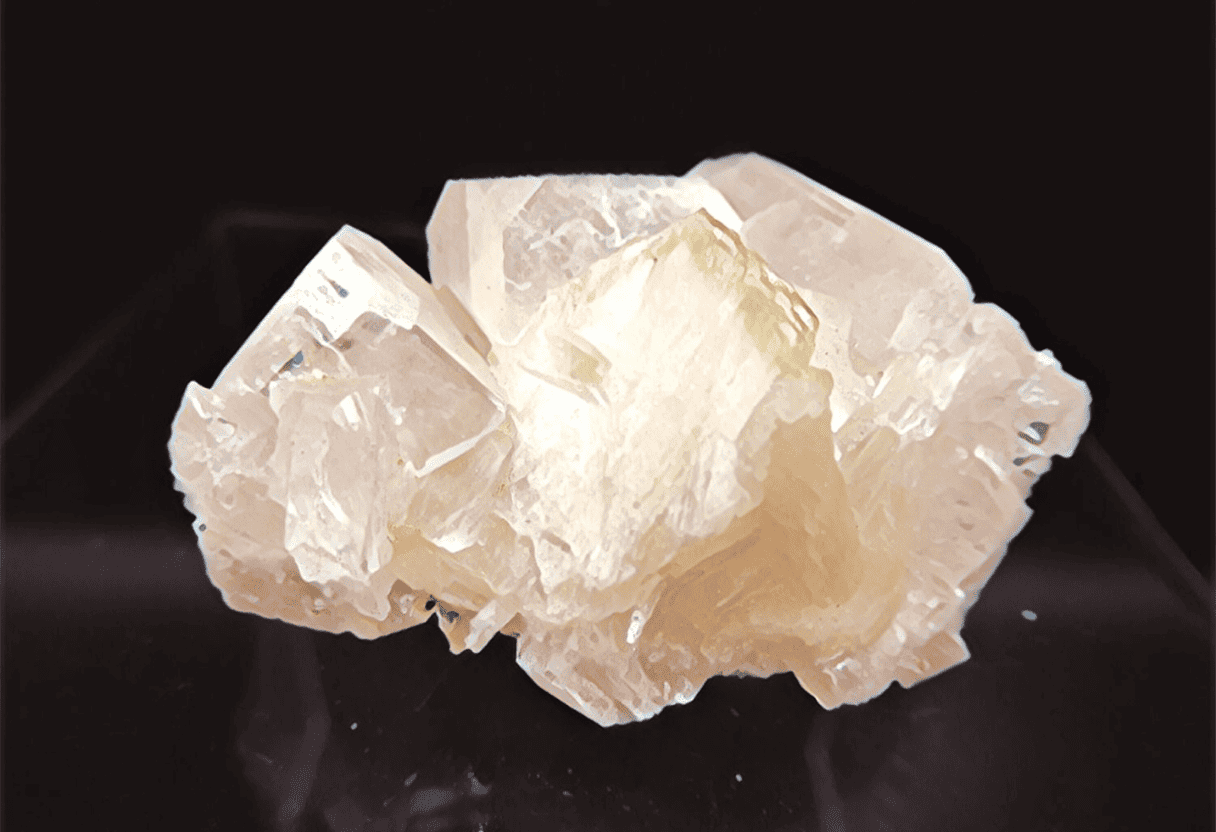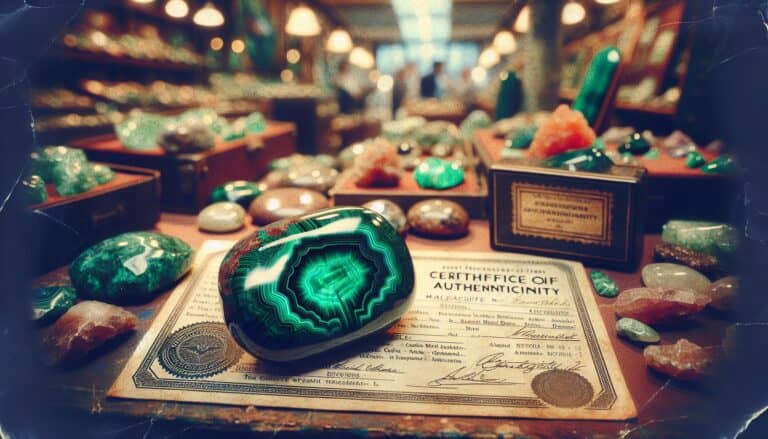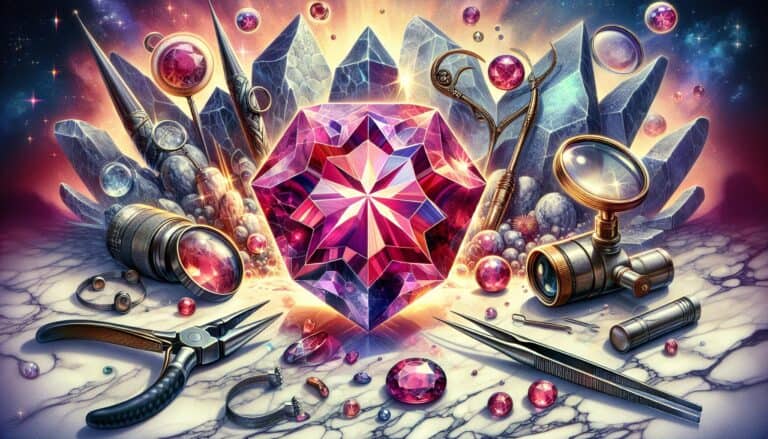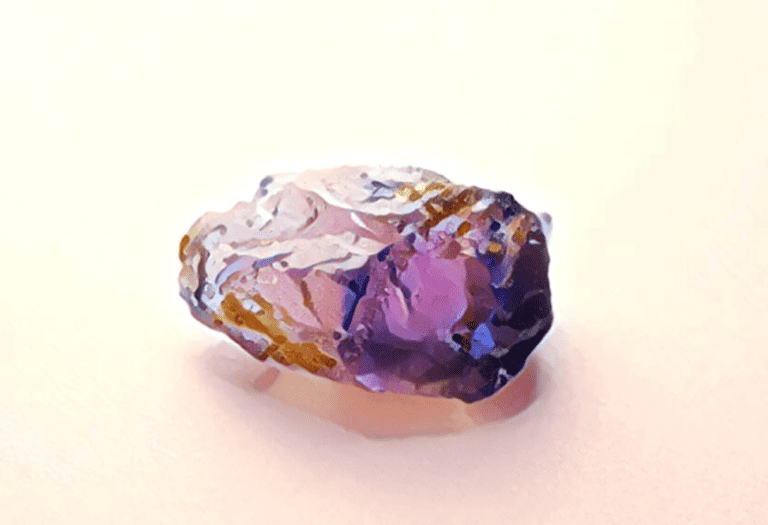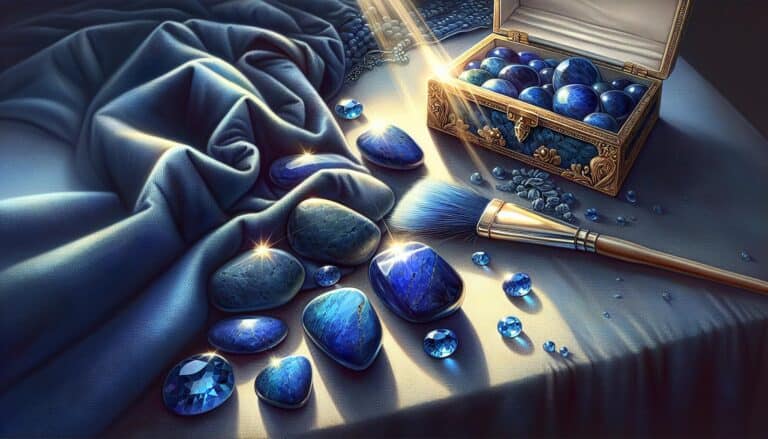As a crystal enthusiast, I’ve always been fascinated by the unique charm of apophyllite.
It’s not just its sparkling allure that catches the eye, but also the curiosity about its value. Whether you’re a collector or just stumbled upon this gem, you’ve likely wondered, “How much is apophyllite worth?”
Determining the worth of apophyllite can be quite intriguing, as it’s influenced by a variety of factors. From its clarity and color to its size and origin, each aspect plays a pivotal role in its market value.
Let’s dive into the sparkling world of apophyllite and uncover the elements that determine its price tag.
Apophyllite’s value depends on clarity, color, size, and origin. High clarity and rare colors like green enhance value. Large, well-formed crystals are more valuable. Apophyllite from renowned localities commands higher prices. Additional factors like rarity of form, market demand, and crystal formation quality also influence its worth.
Factors Affecting the Value of Apophyllite
When I’m evaluating the worth of apophyllite crystals, clarity is one of the most crucial aspects I consider. A crystal’s clarity is synonymous with its purity – the fewer inclusions or cloudiness, the higher the value. Crystal collectors and enthusiasts often seek out the clearest specimens, which can command top dollar in the market.
Another determinant in an apophyllite’s value is its color. Although apophyllite can come in a variety of colors including white, green, and pink, certain hues are more sought after than others. For instance, green apophyllite is exceptionally prized due to its rarity and vibrant hue, often resulting in a higher price point.
The size of the apophyllite also plays a significant role in its valuation. I’ve observed that larger crystals, particularly those that maintain their clarity and color, are exponentially more valuable. It’s not only the weight that matters but also the aesthetic appeal of a well-formed, large crystal specimen that can make it a centerpiece of any collection.
Lastly, the origin of the apophyllite affects its worth. Specimens from classic localities, where the crystal is known to be of superior quality, may be more valuable. The reputation of a mine can add to the allure and desirability of the crystal, influencing buyers who value historical and geographical significance.
- Clarity: High clarity increases value
- Color: Rare colors like green command higher prices
- Size: Large, well-formed crystals are more valuable
- Origin: Reputation of the mining locality impacts worth
Do bear in mind that these factors can interact in different ways. For example, a small, clear, green apophyllite might be worth more than a larger, cloudy, white crystal. Understanding these nuances is key for those looking to appraise or invest in apophyllite crystals effectively.
Clarity: A Key Determinant
When I delve into the realm of apophyllite valuation, I can’t stress enough the significance of clarity. This crucial aspect has an undeniable impact on a crystal’s allure and, by extension, its market price. Clearer apophyllite specimens allow for better light passage, which enhances their luster and makes their natural beauty more apparent.
In the mineral collecting community, clarity is typically categorized into several grades. Here’s a quick rundown of what these grades mean for apophyllite:
- Eye-Clean: These are the top-tier crystals, completely free or almost free of inclusions when observed with the naked eye. They’re highly coveted and fetch a premium.
- Slightly Included: Minor inclusions exist, but they’re not significantly affecting the overall clarity or sparkle of the crystal.
- Moderately Included: Inclusions are noticeable and may somewhat affect the crystal’s transparency and brilliance.
- Heavily Included: Such crystals have numerous inclusions that can heavily impact the appearance and reduce the value.
It’s important to note that inclusions aren’t always a bad thing. In some cases, they can create unique internal patterns that captivate collectors. However, for the highest value, it’s generally the ones with fewer flaws that are more desirable.
High clarity in apophyllite can also lead to more brilliant displays of its natural phosphorescence. When apophyllite is clear, it tends to glow more intensely under UV light, a feature that many collectors and enthusiasts seek out.
Monitoring clarity and understanding its grades can immensely aid in determining the worth of apophyllite crystals. I ensure I assess it thoroughly, both with tools like a jeweler’s loupe and by observing its overall appeal to the naked eye. The clarity of apophyllite doesn’t just indicate its visual purity – it’s a direct reference to its rarity and value in the minerals market.
The Role of Color in Apophyllite’s Worth
In diving deeper into the valuation of apophyllite crystals, another critical factor emerges: color. Color isn’t just an aesthetic trait; it’s a key player in determining a crystal’s value. Typically, apophyllite comes in shades of white, clear, green, pink, and yellow. Among these, the clear and green varieties tend to be more sought after.
The presence of trace elements and impurities during the crystal formation process often influences the color of apophyllite. Green apophyllite, for example, owes its hue to the inclusion of vanadium, while manganese can give rise to pink tones. Collectors and enthusiasts tend to prize unique and vibrant colors, causing such specimens to fetch higher prices in the market.
It’s fascinating to see how the intensity and uniformity of color affect apophyllite’s worth. Intense and evenly distributed colors are preferable and thus command higher premiums. On the other hand, crystals with pale or uneven coloring generally fall lower on the value scale.
Here are key points in how color impacts the worth of apophyllite:
- Clear and green hues are among the most valuable.
- Trace elements cause variations in color, with certain elements leading to more desirable hues.
- The intensity and uniformity of the color considerably influence a crystal’s appeal and value.
While color is a subjective aspect in terms of personal preference, its impact on a crystal’s worth cannot be overstated. For many, the allure of a richly colored apophyllite can be likened to the elation of discovering an artist’s masterpiece. Color is not just an attribute of beauty in apophyllite; it’s a fundamental characteristic that reflects the complex history of the crystal’s formation, making each piece a narrative encapsulated in mineral form.
In my experience as both a collector and a seller, I’ve noticed that certain colors tend to trend in popularity, which can also shift their value temporarily. It’s similar to fashion; as tastes and market demands change, so too do the preferred shades of apophyllite. Knowing this, it’s imperative that collectors stay informed about current trends while also considering the timeless aspects of a crystal’s color.
Size Matters: Larger is Not Always Better
In the world of apophyllite, size has a nuanced contribution to a crystal’s value. It’s a common misconception that bigger crystals are always more valuable. In actuality, size alone doesn’t guarantee a higher worth.
For instance, larger apophyllite specimens can be less desirable if they have poor clarity or color. It’s the interplay between size and quality that ultimately impacts their worth. Collectors often seek out pieces that offer the best of both worlds—a significant size coupled with exceptional clarity and color.
Crystals that are too large might also be prone to damage or may include areas of lower quality within the specimen. For example, a crystal that has clear, vibrant sections in addition to areas with inclusions or less desirable colors would not be as valued as a smaller crystal that’s uniform in quality.
Here are some insights into how size affects apophyllite values:
- Small to Medium Crystals: These are often more accessible and can be incredibly clear and colorful, making them highly prized by collectors and enthusiasts.
- Large Crystals: They tend to carry a premium, especially when the crystal’s quality remains high. However, crystal perfection decreases with size, making large, high-quality apophyllite specimens rare and expensive.
- Giant Specimens: These are usually reserved for museums or private collectors willing to overlook minor imperfections for the sake of owning a monumental piece.
To provide context, I’ll share a brief market analysis based on size:
| Size Category | Average Market Price | Noted Price Influencer |
|---|---|---|
| Small (1-2 inches) | $10-$50 | Quality of crystal |
| Medium (2-4 inches) | $50-$200 | Clarity and color saturation |
| Large (4+ inches) | $200-$1000 | Rarity and overall perfection |
Remember, inclusions and color zoning can diminish a crystal’s value, irrespective of its size. Therefore, it’s essential to consider all the attributes of apophyllite rather than assess its worth based on size alone. This approach ensures that both buyers and sellers align their expectations with the true market value of these stunning minerals.
Understanding the Significance of Origin
When I delve into the valuation of apophyllite, it’s vital not to overlook the significance of the crystal’s origin. Certain localities are renowned for producing apophyllite crystals of superior quality, which can greatly influence their market value. For example, apophyllite specimens from the Deccan basalt areas of India often display exceptional luster and shape which make them highly sought after by collectors.
The origins of apophyllite crystals contribute to their identity and their story, adding a layer of value that goes beyond the physical attributes. The surrounding environment where apophyllite is formed affects its purity and the presence of other minerals, which may introduce unique inclusions that are prized for their beauty and rarity. Mines known for producing fine specimens can sometimes fetch a premium simply based on their name, similar to a brand.
Here are a few renowned locations and their influence on apophyllite’s worth:
- Pune, India: Noted for pristine, clear crystals often preferred by enthusiasts for display.
- Jalgaon, India: Produces striking green apophyllites that are rare and command higher prices.
- Nasik, India: Known for their large, well-formed crystals which are coveted by collectors globally.
As the demand for transparent and well-formed apophyllite increases, crystals from less well-known localities might not hold the same allure. However, it’s worth mentioning that interesting specimens from lesser-known sources can capture attention if they exhibit unusual features or exceptional clarity and color.
I’ve found that beginner collectors often overlook the origin, focusing primarily on aesthetics. Nonetheless, seasoned collectors and experts are keenly aware that the provenance of a crystal can be as important as its physical properties. When assessing apophyllite’s value, it’s critical to consider the full history, which includes the geological saga of its creation and its journey from earth to market.
Other Influences on Apophyllite’s Value
Beyond clarity, color, size, and origin, there are additional factors that can affect apophyllite’s market value significantly. Historical context and the story behind a crystal often create an emotional connection, driving up demand and price. If a specimen comes with a rich history or was once part of a notable collection, its worth may far exceed its physical attributes.
Let’s delve into a few other influences:
- Rarity of form: Some apophyllite crystals display rare formations such as bi-colored specimens or unique structures like twins or phantoms. These unique features can command higher prices in the market.
- Market demand: The fluctuation of the crystals’ popularity plays a vital role. If apophyllite becomes a trend in home decor or healing communities, its value spikes accordingly.
- Quality of crystal formation: Crystals that have well-defined edges and symmetrical shapes are often considered more valuable. They depict the careful and unhindered growth of the mineral over thousands of years.
Here’s a quick glance at why these factors matter:
| Factor | Importance in Value |
|---|---|
| Historical Context | Adds emotional value |
| Rarity of Form | Increases uniqueness |
| Market Demand | Influences price |
| Quality of Crystal Formation | Reflects growth and symmetry |
In addition to the above, treatments and enhancements can also affect the value. Natural, untreated specimens are usually more sought after than those that have been enhanced artificially. This preference aligns with a growing trend towards natural and authentic gemstones among collectors and enthusiasts.
Lastly, the reputation of the seller and the confidence they instill in potential buyers can impact pricing. A well-known, reputable seller may assure the buyer of the authenticity and quality of the apophyllite, hence, elevating its perceived worth. It’s crucial to consider the level of trust that a seller has established within the mineral community.
Understanding these nuanced factors can help explain the sometimes-wide pricing disparities observed in the market for apophyllite crystals. Remember that the value of a crystal like apophyllite is not just in its physical beauty or rarity, but also in the stories it carries and the trust it inspires.
Conclusion: Buying & Selling Apophyllite
Determining the worth of apophyllite isn’t just about assessing its physical attributes; it’s about appreciating the story and rarity that each crystal carries. I’ve seen firsthand how market demand and the credibility of the seller play pivotal roles in pricing.
Remember, natural and untreated specimens often command higher prices, reflecting the pure essence of these stunning minerals. Whether you’re a collector or simply someone who appreciates the beauty of apophyllite, understanding these nuances is key to making informed decisions.
Armed with this knowledge, you’re now better equipped to value apophyllite crystals accurately and perhaps even discover a hidden gem that others might overlook.

